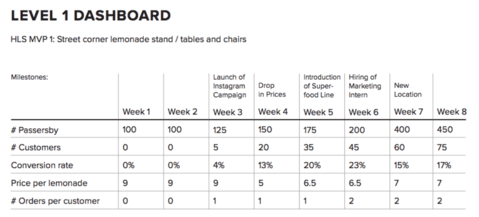Innovation Accounting: What It Is and How to Get Started
Curated from: ideou.com
Ideas, facts & insights covering these topics:
7 ideas
·515 reads
7
3
Explore the World's Best Ideas
Join today and uncover 100+ curated journeys from 50+ topics. Unlock access to our mobile app with extensive features.
Use IA in the early game
Innovation Accounting is a way of evaluating progress when all the metrics typically used in an established company (revenue, customers, ROI, market share) are effectively zero.
Innovation Accounting is not only a way for individual teams to report their progress and communicate in financial terms. It’s also extremely useful for seeing how projects, portfolios of projects, or even whole enterprises are changing over time. And, most importantly, it gives the ability to summarize these disparate initiatives using a common vocabulary and accountability framework.
8
344 reads
What does IA help with
- It provides a framework of chained leading indicators, each of which predicts success. Each link in the chain is essential and, when broken, demands immediate attention.
- It’s a focusing device for teams, keeping their attention on the most important assumptions they’ve made about their project.
- It provides a way to tie long-term growth and R&D into a system that follows a clear process for funding innovation and can be audited for its ability to drive value creation.
7
40 reads
The 3 Stages of IA
- Use a simple dashboard of metrics that allows the team to track progress over time at the start of a project. It gives a basic sense of what’s working and what’s not. If customers won’t even try the product, it doesn’t matter what their repeat purchase rate is.
- It represents the complete interaction with a customer and includes later-stage variables like repeat purchases, bad retention levels, or margin.
- Looks at the learnings gained from the first two levels of IA translated into dollars by rerunning the full original business case with each Lvl 1 and 2 iteration.
6
29 reads
Steps for your Level 1 dashboard
1. Come up with some initial metrics. These should be simple and actionable and should not have to be related to one another.
For example, a number of customers interviewed and their rating on identified struggles might be two starting metrics.
2. If you’re stuck on metrics, ask these four questions, each of which will give rise to a set of metrics designed to answer it.
- Did we do what we said we were going to do?
- Are our people working differently?
- Do customers (internal or external) recognize and improvement?
- Are we unlocking new sources of growth as a company?
8
20 reads
“To truly transform our organizations and our way of working, we need to change our accounting systems, too.”
ERIC RIES
6
28 reads
A simple Level 1 dashboard
Here’s an example of a Level 1 dashboard looking at the first experiment done by a team building a lemonade stand and hoping for hypergrowth through the use of drone delivery and premium ingredients down the road:
6
26 reads
Accountability is Key
Use the dashboard to hold your team accountable. Simply ask this question: Which metrics are improving over time?
For example, a team that’s trying to prove they can charge a price premium for a new product might do an initial version where nobody is willing to buy, so revenue per customer is $0 for the first test. A few product revisions later, perhaps revenue has grown to $1. This is progress, even if the goal is ultimately $10 or $100.
5
28 reads
IDEAS CURATED BY
36 yr old product guy. Interested in meditation, product design and the future.
CURATOR'S NOTE
Recently learned about Innovation Accounting that's been recommended as the practice to adopt until thinking about metrics relevant to product-market fit.
“
Alexandru Băduț's ideas are part of this journey:
Learn more about entrepreneurship with this collection
Essential product management skills
How to work effectively with cross-functional teams
How to identify and prioritize customer needs
Related collections
Similar ideas
Read & Learn
20x Faster
without
deepstash
with
deepstash
with
deepstash
Personalized microlearning
—
100+ Learning Journeys
—
Access to 200,000+ ideas
—
Access to the mobile app
—
Unlimited idea saving
—
—
Unlimited history
—
—
Unlimited listening to ideas
—
—
Downloading & offline access
—
—
Supercharge your mind with one idea per day
Enter your email and spend 1 minute every day to learn something new.
I agree to receive email updates





